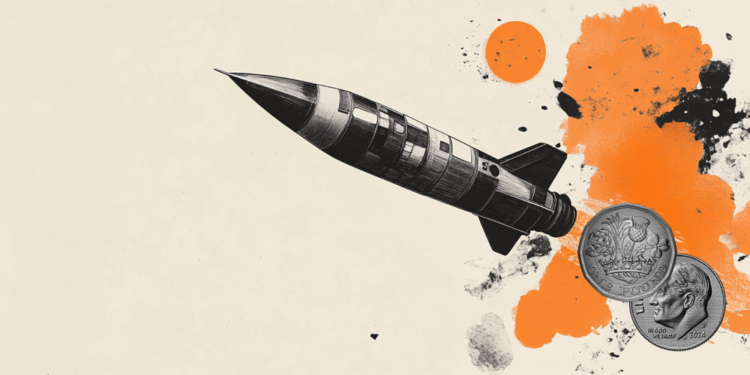- AUD falls 0.73% to 0.6155 on Friday.
- Stronger-than-expected NFP boosts USD demand.
- The Fed’s hawkish stance and US-China trade tensions weigh on the Aussie.
The Australian Dollar remains under intense selling pressure following stronger than anticipated US Non-Farm Payrolls (NFP) data, hovering around multi-year lows around 0.6150. The Federal Reserve’s (Fed) shift in hawkish stance keeps US Treasury yields elevated, continuing to support the Dollar. Domestically, early rate cut expectations from the Reserve Bank of Australia (RBA) and fears of a US-China trade war continue to undermine the Aussie.
Daily Market Summary: Strong US Jobs Report Boosts USD at Aussie’s Expense
- The US Bureau of Labor Statistics reported 256,000 new jobs in December, surpassing the consensus of 160,000; the November figure was revised downward to 212,000.
- The unemployment rate fell to 4.1%, while average hourly earnings fell from 4% to 3.9% year-on-year, slightly moderating inflation concerns.
- Markets now anticipate only one Fed rate cut in 2025, leading the US Dollar Index (DXY) to a high of 109.96 before a slight pullback.
- China’s economic uncertainty and renewed tariff concerns drive safe-haven flows into the USD, adding pressure to the trade-sensitive Aussie.
- The RBA’s dovish outlook and speculation about an imminent rate cut add another layer of weakness to the Australian Dollar.
AUD/USD Technical Outlook: Sellers remain in control as RSI signals oversold conditions
The Relative Strength Index (RSI) sits around 28, indicating oversold territory and continuing a downward trend. Meanwhile, the MACD Indicator histogram exhibits increasing red bars, reflecting intensified bearish momentum. With the pair firmly below 0.6150, any attempted recovery could struggle unless market sentiment improves or the Fed’s hawkish stance is moderated.
Immediate support is at 0.6150, the multi-year low just reached; a break below exposes 0.6100 and then 0.6060 as possible next bottoms. To the upside, initial resistance lines up near 0.6200, followed by 0.6260, the area that needs to be reclaimed for any significant recovery attempt.
Australian Dollar FAQs
One of the most important factors for the Australian Dollar (AUD) is the level of interest rates set by the Reserve Bank of Australia (RBA). As Australia is a resource-rich country, another key factor is the price of its largest export, iron ore. The health of the Chinese economy, its largest trading partner, is a factor, as is inflation in Australia, its growth rate and the Balance of Trade. Market sentiment, that is, whether investors bet on riskier assets (risk-on) or seek safe havens (risk-off), is also a factor, with the risk-on being positive for the AUD.
The Reserve Bank of Australia (RBA) influences the Australian Dollar (AUD) by setting the level of interest rates that Australian banks can lend to each other. This influences the level of interest rates in the economy as a whole. The RBA’s main objective is to maintain a stable inflation rate of 2%-3% by adjusting interest rates up or down. Relatively high interest rates compared to other major central banks support the AUD, and the opposite for relatively low ones. The RBA can also use quantitative easing and tightening to influence credit conditions, with the former being negative for the AUD and the latter being positive for the AUD.
China is Australia’s largest trading partner, so the health of the Chinese economy greatly influences the value of the Australian Dollar (AUD). When the Chinese economy is doing well, it buys more raw materials, goods and services from Australia, which increases demand for the AUD and drives up its value. The opposite occurs when the Chinese economy does not grow as fast as expected. Therefore, positive or negative surprises in Chinese growth data usually have a direct impact on the Australian Dollar.
Iron ore is Australia’s largest export, with $118 billion a year according to 2021 data, with China being its main destination. The iron ore price, therefore, may be a driver of the Australian dollar. Typically, if the price of iron ore rises, the AUD also rises as aggregate demand for the currency increases. The opposite occurs when the price of iron ore falls. Higher iron ore prices also tend to result in a higher likelihood of a positive trade balance for Australia, which is also positive for the AUD.
The trade balance, which is the difference between what a country earns from its exports and what it pays for its imports, is another factor that can influence the value of the Australian dollar. If Australia produces highly sought-after exports, its currency will gain value solely from the excess demand created by foreign buyers wanting to purchase its exports versus what it spends on purchasing imports. Therefore, a positive net trade balance strengthens the AUD, with the opposite effect if the trade balance is negative.
Source: Fx Street
I am Joshua Winder, a senior-level journalist and editor at World Stock Market. I specialize in covering news related to the stock market and economic trends. With more than 8 years of experience in this field, I have become an expert in financial reporting.







